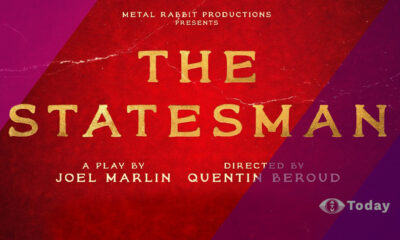Chris Wood, CTO, Spicy Mango looks at the world of esports.

The world of esports is growing rapidly. In fact, it is estimated that esports revenues topped $1billion in 2019, a 27% increase from 2018’s figure. Esports has now entered the big leagues, with Comcast announcing this year that it would build a $50 million arena to accommodate esports tournaments. And leading the way is Fortnite, which as of March 2019 had 250 million registered users, with other games including Dota 2, League of Legends, Counter-Strike: Global Offensive and Overwatch also seeking to take a slice of the competitive gaming landscape.
However, as with any environment, the growth of esports will undoubtedly come with teething problems. And with market leaders such as Amazon and Alibaba trying to take a path into the esports business, where is the future of its viewership heading? As a sport watched almost entirely by gamers, the question for broadcasters is, how can they make it appeal to the masses – and should they?
With Amazon’s Sport Now subscription having recently included Arena Esports into their monthly membership, and with broadcasters like the BBC among others have already taken a leap into the world of esports by broadcasting specific tournaments, broadcasters and OTT platforms are clearly attempting to capitalise on this ever-growing market. However, with an estimated 250 million people watching esports worldwide on sites like Amazon-owned Twitch and Google-owned Youtube, and the number of 16-24-year-olds watching esports growing by more than 60% in the last year, how does a subscription or broadcast service compete? The demographic of the esports audience plays an important role here: does the demographic and its spending power offer enough of an opportunity to broadcasters to decide if the investment is worth making? The spending power of the current largest demographic – 16-24-year-olds – may not be compelling enough for more broadcasters to consider the approach.
From the duration of the game to capturing the atmosphere and considering a change in format, Chris Wood, Spicy Mango looks at the challenges broadcasters need to consider before they take the leap into the world of esports.
Traditional Broadcast vs Online Distribution
Dominating the esports viewership market, streaming platform Twitch offers users a unique experience. From esports tournaments to video game streamers to streamers who are just chatting, Twitch gives users autonomy over what they want to watch and when. Furthermore, with the ability to interact with other players through live chat, this platform creates a sense of community that gamers want to be a part of- a community sometimes more important than the tournament they’re watching.
However, with the static nature of broadcast only offering the viewer the chance to view, not interact, will gamers choose to watch it on the big screen? Again, this is where the audience of esports is important: by 2021, ‘casual’ esports viewers will outgrow esports fans/players by 57 million – possibly due to increased awareness – presenting an opportunity for broadcasters to appeal to far more than the players themselves.
In 2018, the League of Legends World Championship was streamed by Twitch for a duration of 304 hours, and this isn’t out of the norm, with many tournaments on air for hours and days at a time. It might seem unnatural for broadcasters to offer the same length of coverage, however, the 2016 Olympic Games was broadcast by the BBC for over 3,000 hours in total, with over 550 hours of coverage on BBC One and BBC Four, while Radio 5 Live also had extensive live coverage, showing it is entirely possible. It can’t be ignored that traditional broadcasters have as much if not more experience to bring major events to a mass audience.
Motivations and Quality of Experience
For broadcasters considering a change in approach, if they aren’t able to offer a live-view of the game, they need to decide what they want viewers to get from their coverage of the sport. EA worked with ESPN on a four-part series called Road to Madden Bowl to help tell the story in the lead up to the Madden Championship, and this enabled EA to reach audiences beyond their traditional online distribution, which added to the hype of the tournament.
However, it doesn’t have to be purely about broadcasters making esports work for their formats when esports could also change its formats to become time-bound, and therefore more broadcast-friendly. Many mainstream sports are changing their formats to appeal to wider audiences – both live and on TV – such as Rugby X, The Hundred and Tie Break Tens. Esports could just as easily make this change to fit in with existing broadcast schedules, and therefore widen the audience. Without the limitations of timescales, broadcasters will be wide open to make esports appealing and work for their audiences.
It’s clear that despite its boom in popularity, esports is still very much still in its exploratory phase for broadcasters, just as much as it is for gaming companies. It will be interesting to see what happens over the next few years; which companies will decide to take part in the journey and will broadcasters be able to conquer the constraints and capture the wider audience’s interest? With lots of questions left to answer, 2020 will surely be an interesting year for the esports market.











